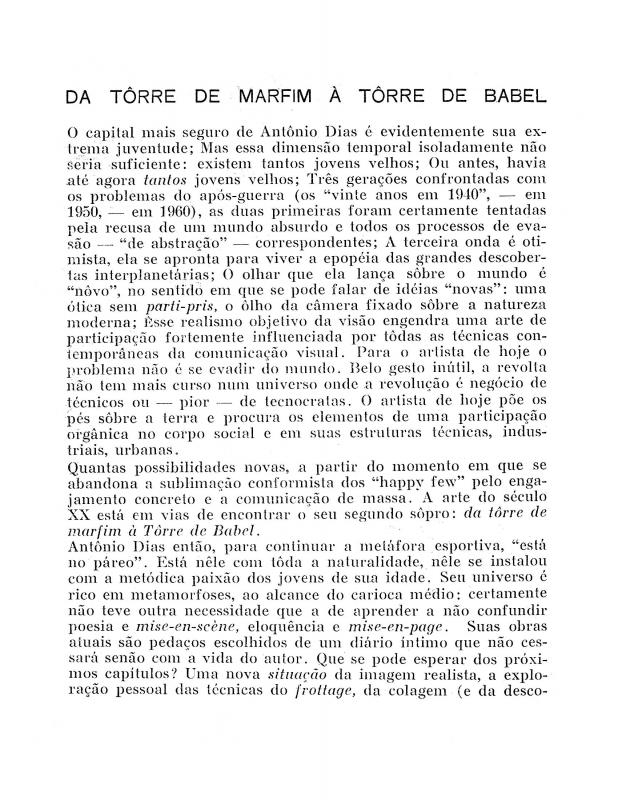In order to systematize the broad range of alternatives in Brazilian art (from 1964 to 1974), the French art critic Pierre Restany (1930–2003) created a number of categories based on, for example, the “marginal” position of artists in terms of the art market; aesthetic research that draws from other fields of knowledge; the “conceptualization” of the artist’s work; the use of technological or audiovisual resources; and the viewer’s involvement in the work. As far back as 1964, Restany could already see that Brazilian artists, such as Antonio Dias (b. 1944), were working with a new type of objective realism [see doc. no. 1110512].
In his article, Restany refers to a “fluctuating and restless” Brazilian reality that coexists with an institutional structure of museums, salons, and the Biennial. In his opinion, the Brazilian potential “energy for creating” its own reality exceeds any type of fiction. In his article “L’art bresilien dans les sables mouvants” he provides examples of the categories referred to above with works by Artur Barrio (b. 1945), Lygia Clark (1920–88), Cildo Meireles (b. 1948), Gabriel Borba Filho (b. 1942), Antonio Manuel (b. 1947), Lygia Pape (1927–2004), Hélio Oiticica (1937–80), Sérgio Camargo (1930–90), Antonio Dias (b. 1944), Regina Vater (b. 1943), Julio Plaza (1938–2003), Mira Schendel (1919–88), Anna Bella Geiger (b. 1933), and Franz Krajcberg (b. 1921).

